...and how Krakow is at the heart of it all
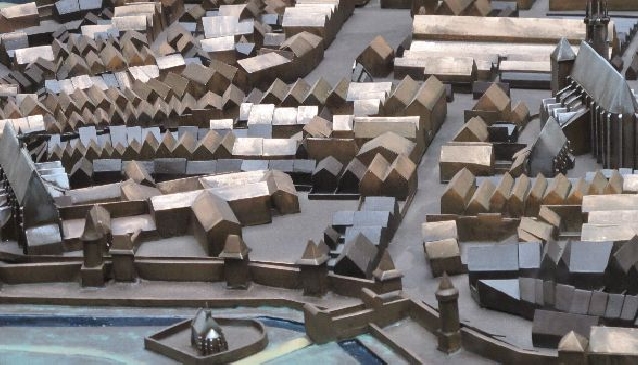
One thousand years, five religions, four languages, three republics, two nations, one commonwealth: Poland’s historical timeline displays the trials and triumphs of a people that value freedom above all.
The history of Poland is long, complex and extremely varied. It spans just over one thousand years and jumps from the unification of small local tribes to a massive multiethnic kingdom, to political non-existence, to the fastest-growing economy of the European Union. Its pattern is recognizably European: the advent of Christianity combined with a cultural adherence to pagan ritual, successions of kings, territorial spats with neighbours, changing political systems in a gradual move from fiefdom to democracy. As with other nations taking shape from the Middle Ages onward, Poland’s history is peppered with armoured knights, burning castles, arrow-shooting warriors, royalty, serfdom, universities, artists, developing cities, trade routes, territorial expansion, industrialization, and the horrors of the Second World War. What it is not peppered with, however, are absolute monarchs, wars of religion, dynastic disputes, overseas colonization, uprisings against national government, or those cloak-and-dagger poisonings and murders that so often determine the course of politics. Here’s a look at some of the most significant steps that brought the nation to where it is today.
Pre-10th century: The days of legend and pagan myth
At the foot of Wawel Castle in Krakow, you may notice a small stone pillar adorned with four faces and a round hat. This is one of those rare vestiges of pre-Christian culture that gives us a glimpse of the lives of the early Slavs; another is Biskupin, the reconstructed early Slavic settlement in north-western Poland. Archaeologists have dug up much evidence of the lifestyle they must have led, from graves and bones to the foundations of early cities; but their culture was, essentially, an oral culture, and today we are left to rebuild their world from fragments of legend, song and ceremony.
966: The baptism of Poland
This is the date popularly accepted as the birth of the nation. The leader of the Polish people, Mieszko I, accepted Christianity, and the Kingdom of Poland began to take shape. Mieszko I could not have imagined what a significant role Christianity would play in his people’s history. In modern times, it has come to represent resistance to foreign oppression. In the Middle Ages, it gave international credibility to the new kingdom. The choice of the Roman church ultimately allied Poland with the West, defining the nation as a bulwark of Christian faith against the East.
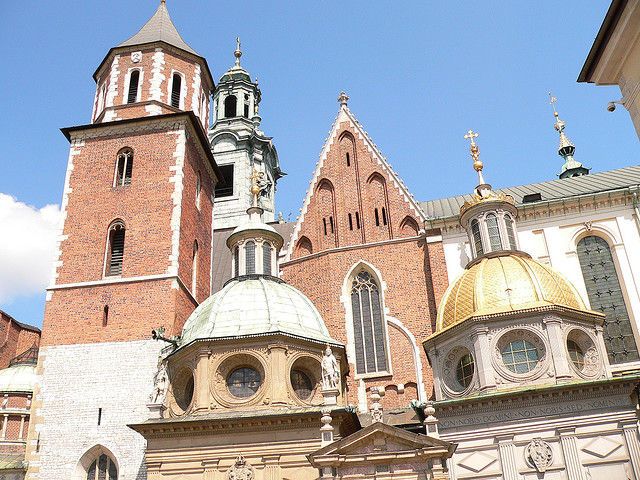
Wawel Castle (flickr credit eazylanish)
1025: Coronation
The first coronation at Wawel Cathedral took place in 1025, and the young kingdom expanded, divided, and reunited over the next couple centuries.
1240s-1280s: Tatar arrows
The Tatar invasions of the 13th century are captured in the legend of the Krakow trumpeter. These warriors came charging across Eastern Europe on horseback, destroying everything in their path. The trumpeter in one of Krakow’s defensive towers was caught mid-tune by an arrow in the throat as he called a warning to his people; his memory is upheld today by the broken tune played from the Mariacki church tower every hour. The invasions utterly destroyed Krakow, but made way for the great architectural feats of the next century that defined the city we see today.
1364: Krakow, Kazimierz and Kopernik
Kazimierz Wielki (Casimir the Great) acceded to the throne in 1333, and Poland’s royal capital was transformed under his patronage. The Main Market Square in the Old Town took on the proportions we see today (although somewhat more cluttered by buildings and intertwining paths). The city of Kazimierz (now a district of old Krakow) was built. International trade brought colour and life to the city. The Jagiellonian University was founded in 1364, the second in Central Europe and one of the oldest in the world. Today you can visit Collegium Maius, the old university buildings in Krakow’s Old Town, and tread the halls where luminaries such as Copernicus once studied.
1264-1795: The Jewish Paradise
One of the most significant events of this era is Kazimierz Wielki’s invitation to the Jews of Europe to settle in Poland. Expelled from England, France, Germany and Spain from the 13th century onwards, Jews found refuge in the tolerance secured by Polish law; Poland came to be known as paradises ludaeorum (Jewish paradise). As early as 1264, a law was passed protecting the rights of Jews and guaranteeing complete religious and cultural freedom. By the 18th century, about eighty percent of European Jews lived in Poland. The culture and traditions they brought with them played a vital role in shaping Polish culture. This is particularly visible today in Krakow’s Jewish district of Kazimierz, home to many beautiful synagogues, an old Jewish cemetery, Jewish restaurants, and some very interesting museums on Jewish life.
1410: Victory at Grunwald
In 1384, a ten-year-old girl named Jadwiga was crowned King of Poland (Polish law made no provision for ruling queens), and a new era began. At the age of twelve she married Jogaila (baptized Wladyslaw Jagiello), Grand Duke of Lithuania, uniting their two lands and creating what would eventually become the largest kingdom in Europe. Twenty years later, King Jagiello led the Polish armies into battle against what was then Poland’s greatest threat, the Teutonic Knights. The Polish army won a victory at Grunwald in 1410 that is seen today as one of the most important events of national history, crushing the Prussian threat and securing Poland’s access to the Baltic Sea. The port city of Gdansk thrived, and through international trade, so did the nation.
1500s: Golden Liberty
For a European monarchy, Poland was a bit untypical. The king tended to be fairly helpless against the powerful rights and privileges of a very large noble class that encompassed anything from poor landless gentry to princes in command of vast territories. The cherished Zlota Wolnosc (Golden Liberty) of the nobility ensured that rule over the freedom-loving kingdom remained both democratic and uncontrollable, expanding until it became impossible for parliament to pass any law without the unanimous agreement of all its noble members.
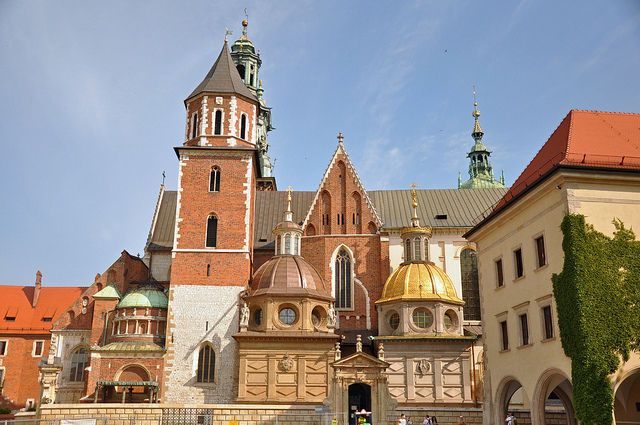
Krakow
1569: The Union of Lublin
The power of the nobility was reinforced by the Union of Lublin, signed in 1569, which turned Poland and Lithuania into a single state with an elected king. In theory, the two nationalities were held as equal under law, but in practice, the nobility of Lithuania became gradually Polonized, while the peasant classes continued to speak their own languages and practice their own religions, generally Eastern Orthodox. The pressure to accept Polish as the dominant culture and language eventually drove the Ukrainians to revolt in 1648, and after a bloody, drawn-out war, the Commonwealth lost vast territories of the eastern borderlands, now modern-day Ukraine.
1573: The first election
The first elected king was the French Henri de Valois (later King Henry III of France), a rather unwilling monarch who flabbergasted his court by his inordinate preoccupation with his appearance, his seeming unfamiliarity with lavatory facilities, and his escape in the middle of the night, only a few months after his arrival, disguised as an old woman. His short reign was not fruitless; he brought back at least two innovations to the French court: lavatory systems that emptied outside the palace walls, and forks.
1596: Royal goodbye to Krakow
More centrally located than Krakow and nearer to the Lithuanian capital of Vilnius, Warsaw became the new royal city in 1596. The Zygmunt III Waza column in front of Warsaw’s royal palace commemorates the city’s first resident monarch.
1655: The deluge
After the Ukrainian uprising of 1648, one disaster followed another. 1655 saw the devastating invasion that became known as the Swedish Deluge, leaving nearly all of Poland’s great fortresses, palaces and cities ransacked, looted and burned. Today, the majority of castles in the Krakow region are still in ruins.
1683: Victory at Vienna
Together with the Battle of Grunwald, this is the greatest and most patriotically remembered battle of Polish history. Led by King Jan III Sobieski, the Polish army came to the aid of the Habsburg Empire and defeated the Ottoan armies in the siege of Vienna. The brilliant military mind of the Polish king was at the centre of the campaign, and the battle was seen as a defence of Christian faith in Europe.
1772: Partition
But victory in Vienna wasn’t enough to turn the tide of failing fortune. Poland gradually fell under foreign influence; Russian forces soon controlled royal elections and parliament proceedings, and dissenters were arrested and exiled. In 1772, the rulers of Russia, Prussia and Austria advanced into Poland and carved out substantial border regions for themselves.
1791: A constitution
Europe’s first, and the world’s second, constitution was signed on 3 May, 1791, a day now honoured every year with banners, song and parades. The constitution aimed to reform the problematic structure of authority, to restrict the “Golden Liberty” of the nobility, and to improve the conditions of the peasants. Russia and Prussia, however, were not at all pleased, and retaliated by invading, revoking the reforms and partitioning more of Poland’s territory in 1793.
1794: A revolutionary hero
Tadeusz Kosciuszko, a young hero of the American Revolution, stepped onto the Main Market Square in Krakow one day and called his people to arms against the partitioning powers. He led troops, many armed with scythes for lack of better weapons, into battle at Raclawice, defeating the massive and well-equipped enemy army. Morale rose and the uprising spread to Warsaw and beyond, but was ultimately crushed. Kosciuszko is honoured today by a burial mound high on a hilltop to the west of Krakow’s Old Town. In 1795, the Polish king abdicated and the last of the country was divided up between Russia, Prussia and Austria.
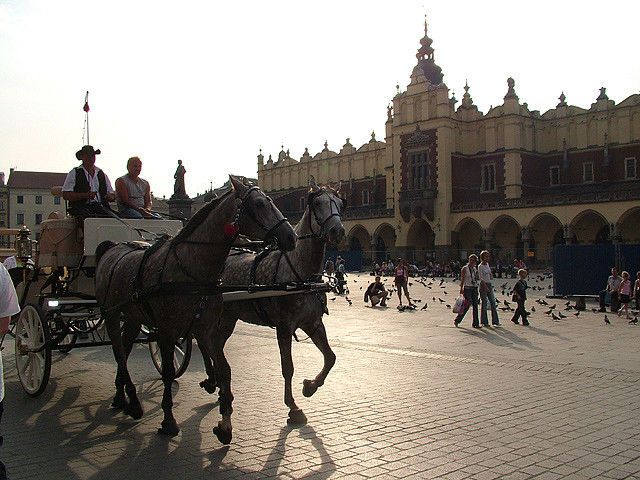
Krakow
1795-1918: Poets, pianists and Paris
In the early 19th century, many of Poland’s elite, including nobles, politicians, writers and musicians, emigrated to Western Europe, especially Paris. They fought above all to keep their national culture and the memory of their great history alive in poetry, art and music. Chopin, the most famous Polish musician of all time, and Mickiewicz, one of the greatest national poets, both emigrants to Paris, belong to this era.
1830 and 1863: Two uprisings
In November 1830, an uprising against Russian occupying forces in Warsaw broke into all-out war. The uprising was crushed a year later, and insurgents met with harsh reprisals. The Polish cause gained sympathy abroad, but within the bounds of the former Commonwealth, Polish language and culture became more and more repressed. In January 1863, another revolt was started, but despite raising morale and national spirit, this uprising also ended in failure. Reprisals were brutal. Public executions, deportations to Siberia and a harsh program of forced Russification led many to abandon hope of political freedom, and to concentrate on building the economic and spiritual power of the Polish nation, with or without official borders.
1918-1939: Interwar independence
The First World War threw Poland’s occupying powers into conflict and gave the divided nation their chance to regain independence. While 11 November 1918 is recognized as Poland’s Independence Day, the reunited country fought on for another three years before defeating Soviet armies and securing the eastern border. After 125 years of separation, in administration as well as in language and culture, the three sections of Poland struggled to reconnect, rebuild and reinforce their economic and military power. By the 1930s, the future was looking bright.
1939-1945: The enemy returns
In literature of the 19th century, Poland was often depicted as a Christ figure, sacrificed for the good of the Christian world. To many, this image became truth in September 1939. The antiquated army was quickly defeated, Poland was once again divided between eastern and western powers, and an attack that aimed at the complete destruction of the country’s political, intellectual, cultural and spiritual strength was launched. Those of the intellectual elite were arrested or executed; hundreds of thousands of high-ranking officers were massacred by the Soviets; millions of Polish Jews, as well as political leaders, writers, priests and other civilians were interned and exterminated by the Nazis. Uprisings in the Warsaw ghetto in 1943, and throughout Warsaw in 1944, were brutally crushed, whole neighbourhoods were liquidated, and at the end of the long struggle, the Red Army marched in over the ruins, claiming the role of liberator and protector. A few twisted arms later, and the Communist party was securely in power, while the spirit of the nation – poets, writers, artists, politicians – once again went underground or abroad.
1946-1989: Worker’s paradise
Today, the communist era is looked on by many with a bit of ironic nostalgia. Special communist tours give curious Western visitors a “real” taste of districts like Nowa Huta, the model city built just outside Krakow after the war, showing both the stately arcades of the central square, and the bleak, often ridiculous aspects of daily life from those times. A few traditional bars still serve cheap hot meals with the classic surly indifference. But the larger issues of the era – political exile, cultural and religious repression, economic damage, propaganda, lies, arrests, betrayal – are still acutely sensitive and evoke unpredictably different reactions, from solemnity to contempt to affectionate humour.
1981: Beginning of the end
The famed Solidarity movement began as a shipyard trade union in 1980 and developed into a massive peaceful protest against communism that eventually broke Soviet control in Eastern Europe. The Polish government reacted to initial workers’ strikes by instituting martial law in December 1981, banning Solidarity and clamping down on controls, but both internal and international support of the movement grew until communist authorities were forced to confront the collapse of their empire. The first elections of the Third Polish Republic were held in 1989, making Lech Walesa, leader of Solidarity, its first President.
1989: Back to square one?
By the time Poland emerged from the communist era and re-joined the rest of Europe, the nation had undergone a millennium of changes in size, shape, composition and power. But whatever the spectrum of victories and defeats that defined the nation, its character, its culture and its people, it ended more or less where it had begun – with approximately the same borders as the early kingdom, about ninety percent ethnically Polish, and predominantly Catholic. However, the imprints left by this multifarious past will never be erased. The rich multiethnic culture developed over centuries, the mix of religions, the shifting of borders that brought tinges of the East into contact with the West, and the tragic surges of invasions that gave rise to moments of heroism and acts of incredible faith have left their indelible mark in monuments, music, art, customs and culture.
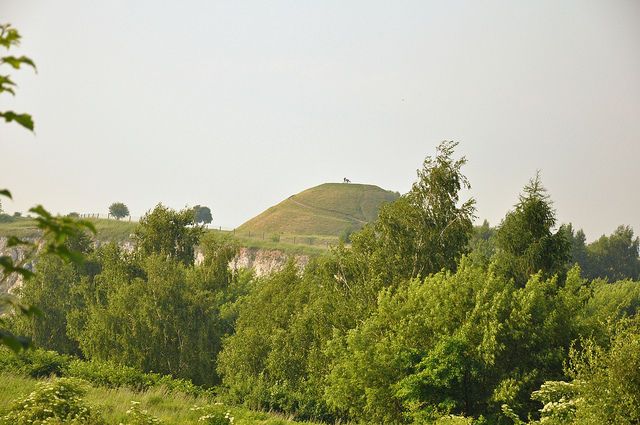
Krakow